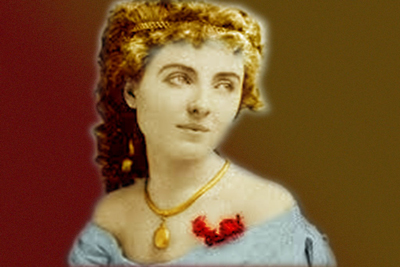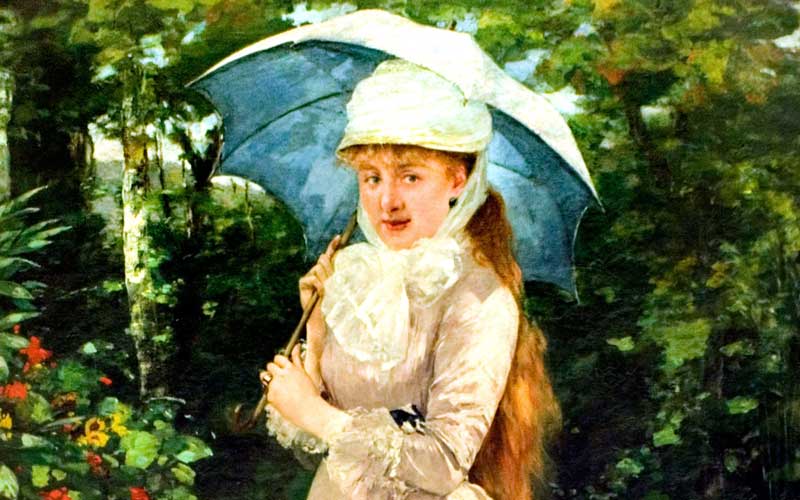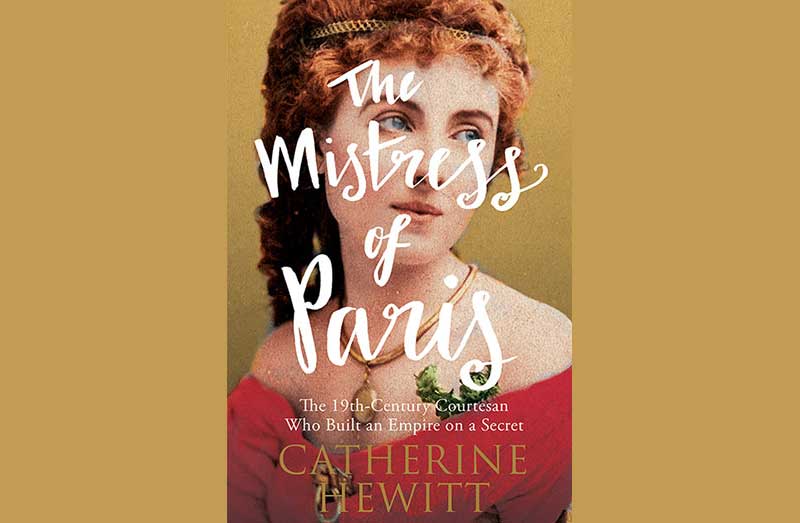
Valtesse de la Bigne, widely considered as one of the most sought after prettiest society darlings and perhaps the most ambitious courtesan in the of 19th-century Paris, when pleasure had become the guiding principle of the society, enough money was there to be made and spent on whims and femininity was celebrated. Her thick red hair, pale complexion and enormous blue eyes gave her an irresistible and alluring look that had a mesmeric effect and was powerful enough to captivate the male interest easily.
Apart from her appearance, she was a well-versed lady, an accomplished painter, a talented pianist and novelist and the author of political pamphlets. Her sharp wit and cool attitude were legendary. She also wrote a novel and inspired the famous author Émile Zola, who immortalised her in his scandalous fiction Nana. Valtesse was painted by the famous artist Édouard Manet, who met her through Émile Zola. However, her most remarkable and interesting feature was her darkest secret. She was not a Comtesse that was her glorious self-creation.
Originally, Valtesse de la Bigne, was simply Émilie-Louise Delabigne, an ordinary Parisian girl from an impoverished household, who was raised on one of the most squalid backstreets of Paris’s 10th arrondissement. The woman, who was destined to become one of the richest and the most powerful sex-symbol in Paris, was the daughter of a violent alcoholic father and a laundry maid from Normandy who worked as a prostitute. Émilie-Louise started to work at an early age of ten in a Paris sweet-shop and at 13, she joined a dress shop, located in an area known as Notre-Dame de la Lorette. She had to work for long hours and walked to and from the store alone through the sordid back alleys of Paris. Within a year, she became the prey of an older man who won her trust, but eventually took advantage of Delabigne’s innocence and raped her.

During that time, clothing and confectionery shops flourished around Notre-Dame de la Lorette, where mostly female workers were employed. As the area was very much frequented by the army of women workers, it also became a hunting ground for men in search of steamy liaisons. During that time, those women in the workforce were paid miserably and they occasionally dipped their toes into the sex work to pay an extra bill or two at the end of the month, as that was the only tool she had at her disposal to climb the social ranks. At a young age, Émilie-Louise also began to work as a prostitute in the lorettes.
However, the lowest status in the sex trade was that of the common prostitute, who were subjected to police arrest. If a woman had not sunk to this level, she automatically joined the demi-monde, the shady half world or underbelly, a place hovering between destitution and respectability. However, the highest grade in the demi-monde to which a girl could aspire was the title of a courtesan, sometimes referred to as la garde. They were the women who commanded Paris in those days. There was a big difference between the world of a courtesan and a common prostitute, which depended on the degree of choice a girl had and her level of earnings. A courtesan could have the priority to choose her lovers and her material benefits could be outstanding. Courtesans used to live in palatial hotels and were sure to be seen at opening nights at the theatres or the glittering Opera Houses. They enjoyed their independence, had a career and their own astronomical income, while the so called good girls were expected to restrict their ambitions to becoming obedient wives and doting mothers.

Louise Delabigne was an ambitious girl. She trained herself on Sundays at the Bal Mabille, a fashionable open-air dance establishment in Paris and started to work in a women's underwear shop on the Champ-de-Mars, frequented by high-ranking officers. There she met and fell in love with Richard Fossey, with whom she had two children. However, within two years, Fossey left her for Algeria, without marrying her. At first, she entrusted her two children to her mother, but after the unfortunate death of a daughter and dispute with her mother, she placed the remaining child in a Catholic boarding school and resolved never to marry and to earn enough money and social status.
Louise Delabigne refused to accept her fate as a dress-shop assistant, rejected her humble origin, modified her banal family name and invented herself as Valtesse, a short form of ‘Votre Altesse’, meaning ‘Your Highness’ in English. She made it a point to be spotted at all the most fashionable gatherings in Paris, befriended journalists so that her name was constantly in the newspapers and within a few years, amassed a small fortune, boasted three mansions, fabulous carriages and an enviable art collection.
She lied, when she said that she was the mistress of Napoleon III, but her big break came, when she seduced the composer Jacques Offenbach, became his mistress and consequently, graduated from the rank of lorette or a common prostitute around Notre-Dame de la Lorette, to a full-blown courtesan. Through Offenbach, she gained access to the fashionable restaurants like Bignon, formerly known as Café de Foy, Café Tortoni and others, where she met famous authors like Zola, Flaubert and Maupassant. It is said that, she was even made a countess by Napoleon III.
At the end of the war, Valtesse quickly launched herself as a high-class courtesan and started to meet her lovers at the legendary infamous Laperouse restaurant to cater high society gentlemen on fine dining while remaining discreet. She left the composer and shifted her attention to Prince Lubomirsky, who installed her in an apartment in rue Saint-Georges. She wrecked him, then left him and had a succession of other rich lovers, like Prince de Sagan, whom she bankrupted by having him build her a gorgeous hôtel particulier on Boulevard Malesherbes. In fact, she ruled the aristocrat society of Paris from her bed. She took the role of a femme fatale, as she exploited all her lovers and mercilessly destroyed all of them, one by one.

After fulfilling her aim to rule the aristocrat society of Paris, the femme fatale immersed herself in a new incarnation, 'Rayon d'or' or 'golden ray', in art and literature. She bought a carriage to travel around Paris, bought a sumptuous house at Ville-d’Avray and decorated it with paintings showing the imaginary members of her invented la Bigne family. She published an autobiographical novel entitled ‘Isola’ in 1876, signed 'Ego', her motto. Though It was a fiction, the book generated a wave of interest, since all who knew about Valtesse could testify to its autobiographical quality.
Valtesse was a friend and sometime lover of a handful of eminent painters, like Edouard Manet, Edouard Dratille, Henri Gervex, Alphonse de Neyville, Eugene Boudin and Gustave Courbet. She posed both for Monet and Henri Gervex and Gervex also used her as the model for the courtesan in ‘Civil Marriage’. At the request of Leon Hennique, a French Novelist and playwright, she showed Émile Zola round her hôtel particulier. She inspired Zola for creating the central character of his novel Nana and Zola was amazed to behold her fabulous bedchamber and the fantastic bed. He vividly described the bed in his novel, where Nana expressed her desire to have a bed, as it did not exist, a throne, an altar where Paris would come to admire its sovereign nakedness. She wanted that the sides of the bed would be adorned with a band of cupids among the flowers who would keep on looking and smile, watching the pleasures in the shadows of the curtains. However, Valtesse was indignant to find such a description of her décor and she found the character of Nana a vulgar whore, stupid and rude.

On another occasion, when the great French author Alexandre Dumas expressed his wish to enter her bedroom, she coldly refused to comply with and bluntly commented that it was not within his means.
Valtesse de la Bigne left her vast burnished bronze bed, created by Edouard Lievre in 1877, to the Musee des Arts Decoratita de Paris, which is still there on display. She sold her hôtel particulier on Boulevard Malesherbes and started to live in Ville-d'Avray, as she eventually retired to train young women like Liane de Pougy, who wished to become successful courtesans. She died suddenly at the age of 62, as one of her veins burst. She was buried in 1910 with two unknown men, ever the champion of romance.
